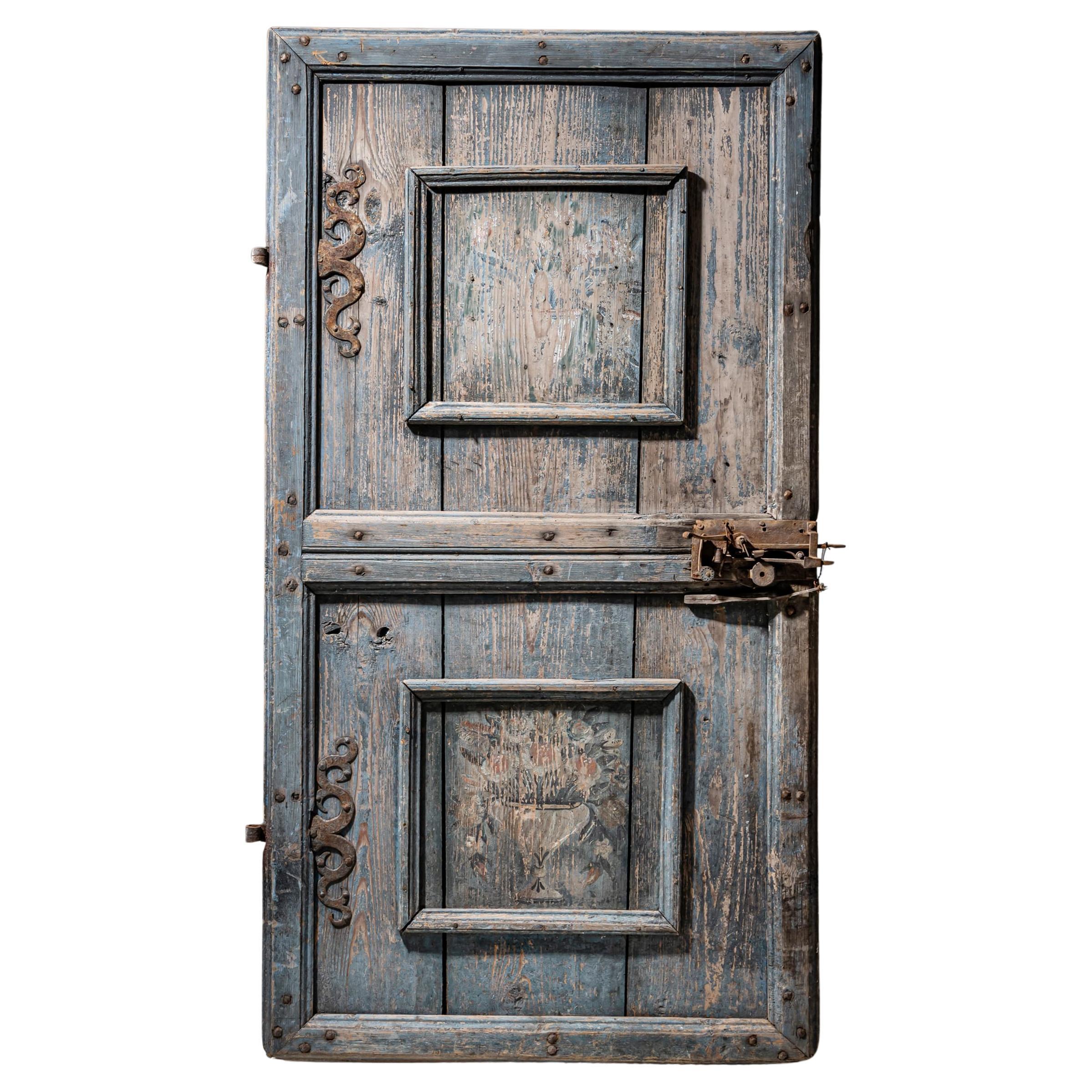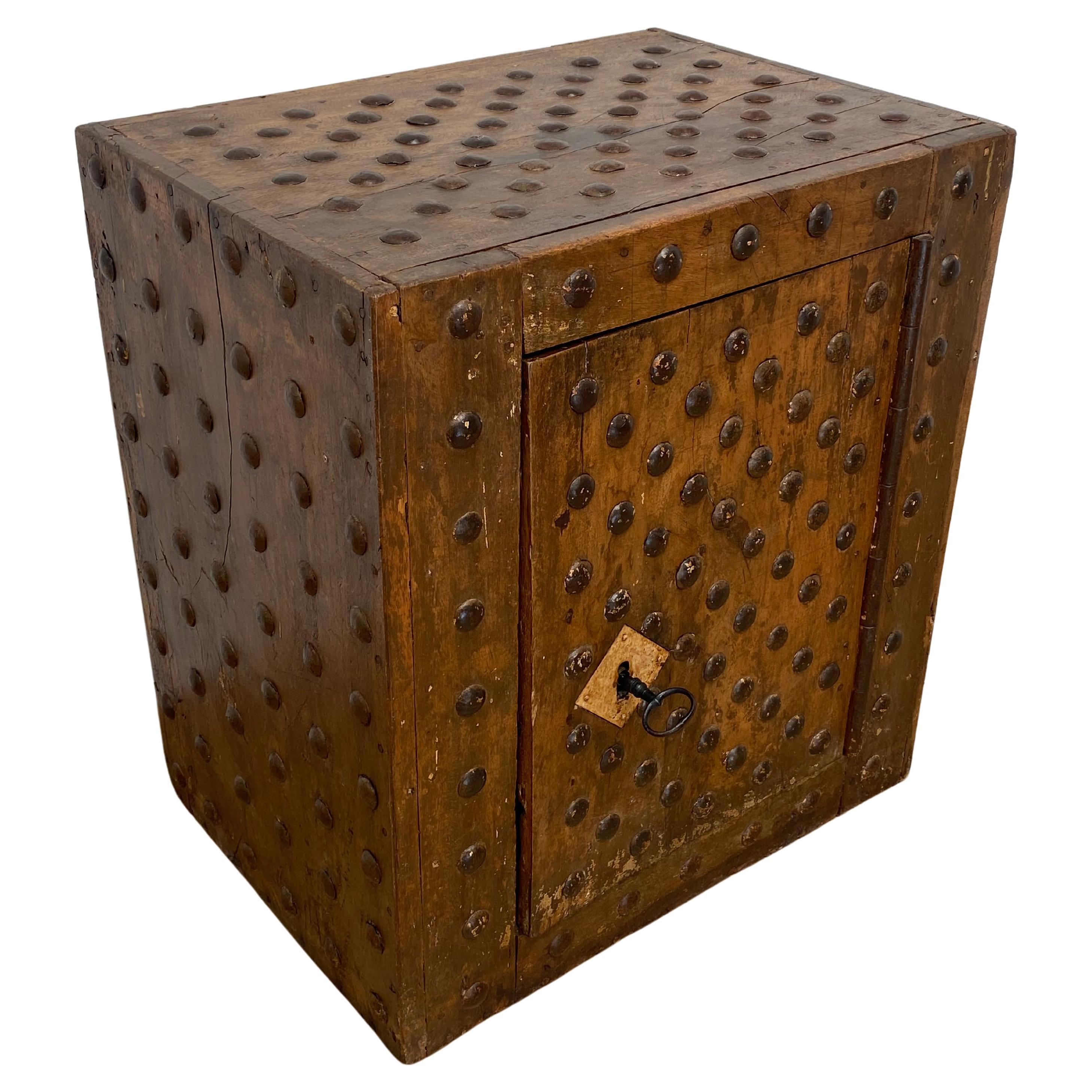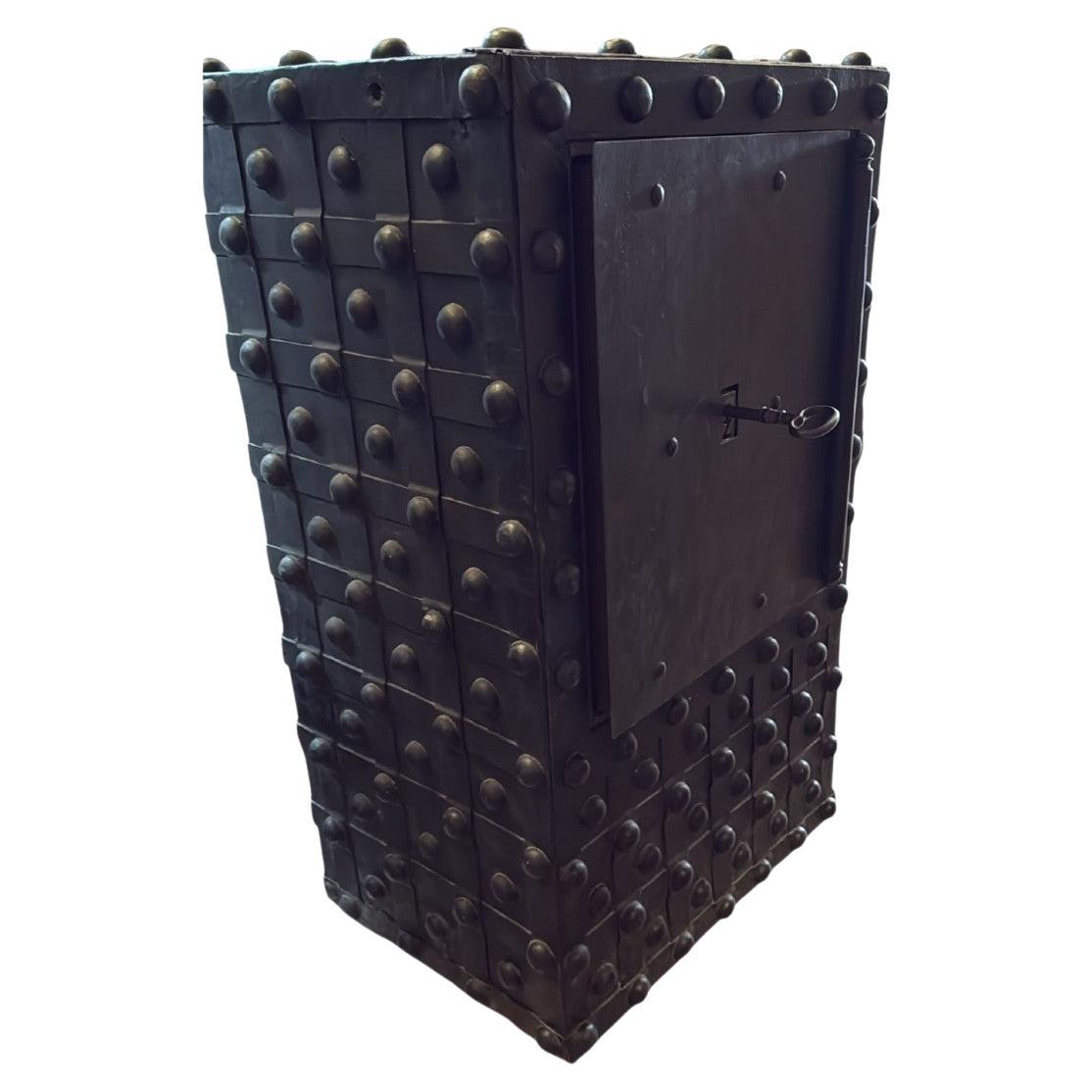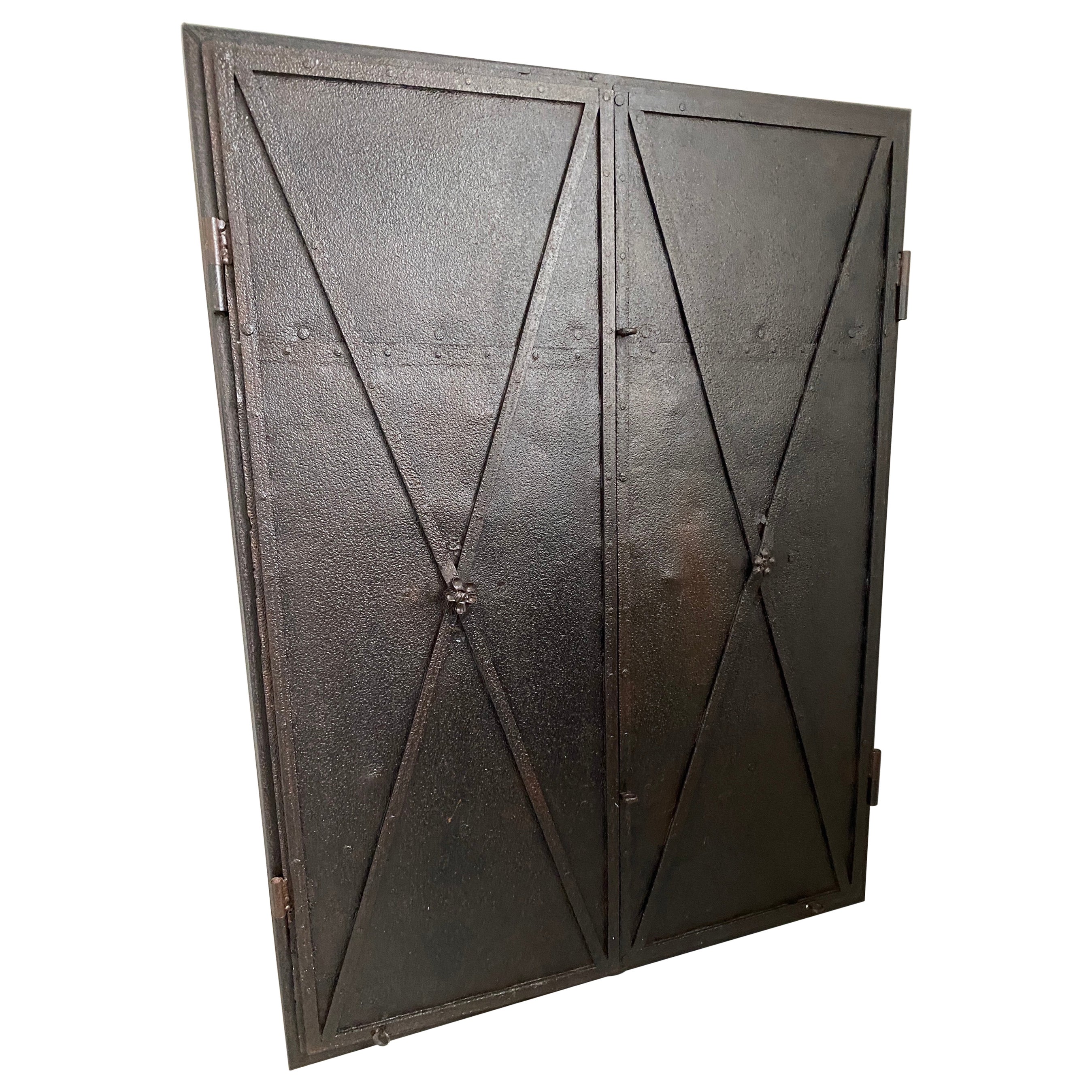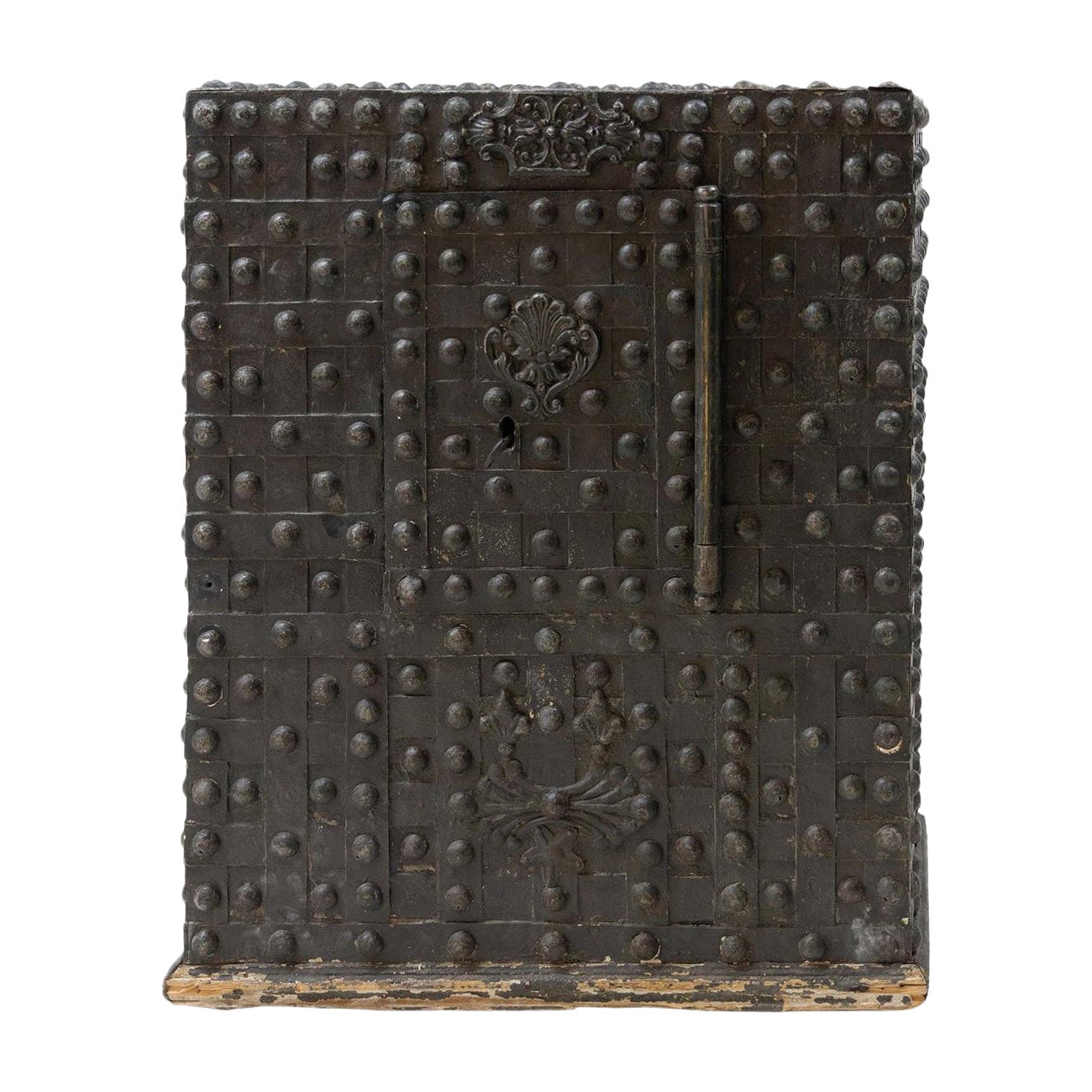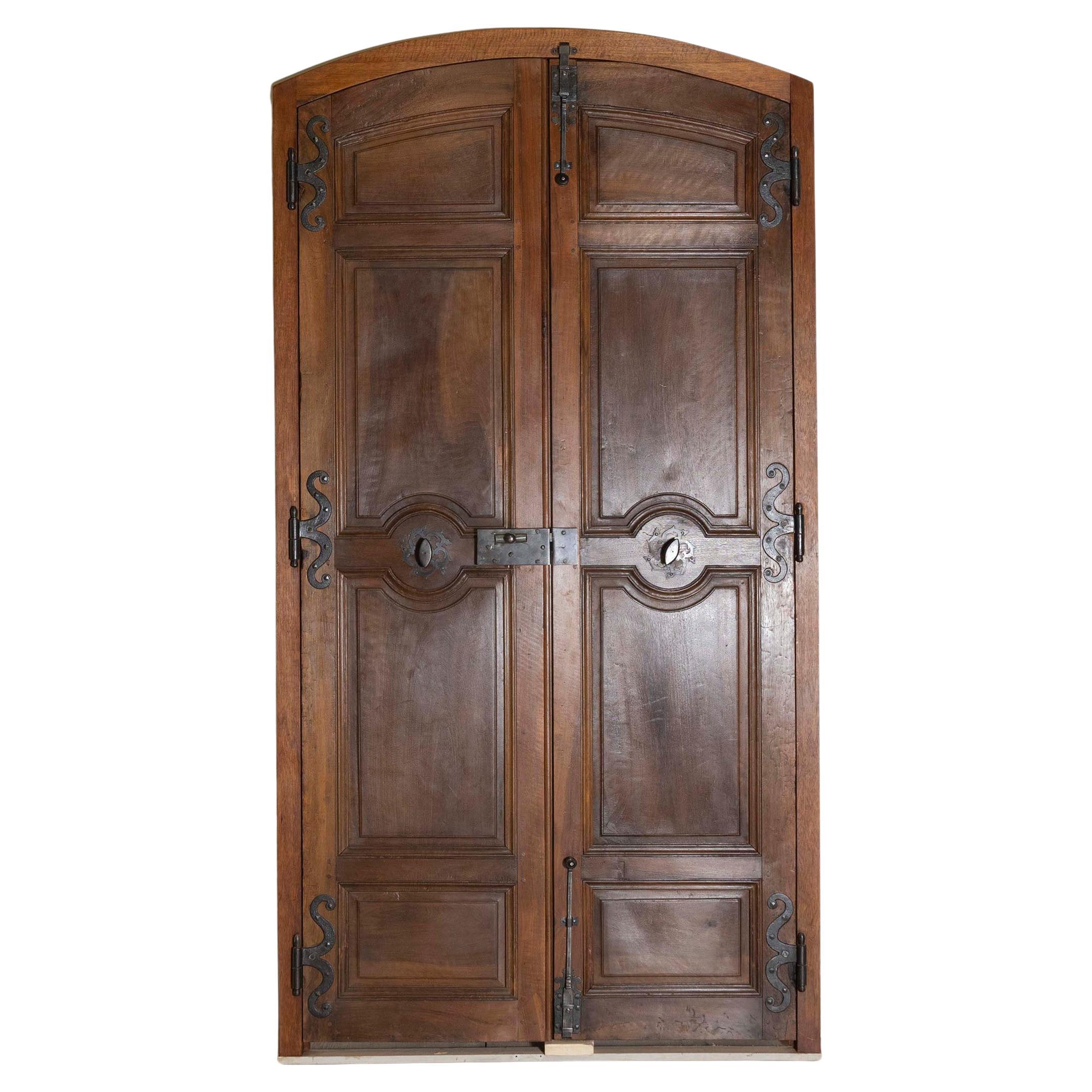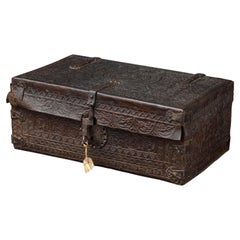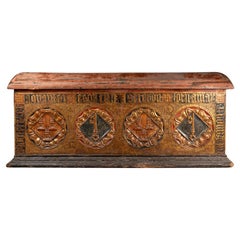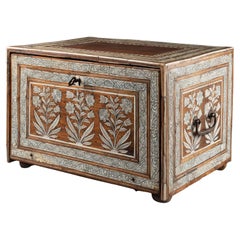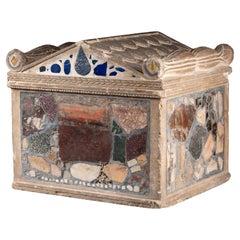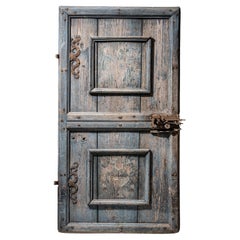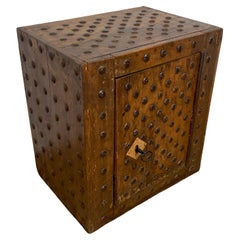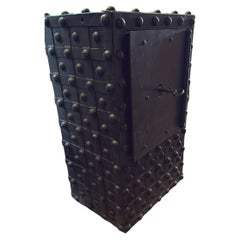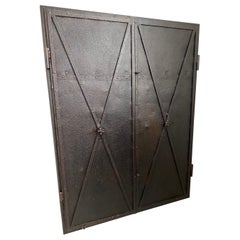Items Similar to Double door safe - Italian, 18th Century
Want more images or videos?
Request additional images or videos from the seller
1 of 6
Double door safe - Italian, 18th Century
$22,229.92
$29,639.8925% Off
£16,636.69
£22,182.2625% Off
€18,750
€25,00025% Off
CA$30,668.11
CA$40,890.8125% Off
A$34,104.21
A$45,472.2825% Off
CHF 17,912.27
CHF 23,883.0325% Off
MX$416,958.18
MX$555,944.2325% Off
NOK 223,204.04
NOK 297,605.3925% Off
SEK 210,421.13
SEK 280,561.5025% Off
DKK 142,734.31
DKK 190,312.4225% Off
About the Item
Cassa-forte
Double door safe
Italian, 18th Century
Iron & Wood
Height: 157 cm
Width: 104 m
Depth: 53 cm
- Dimensions:Height: 61.82 in (157 cm)Width: 40.95 in (104 cm)Depth: 12.21 in (31 cm)
- Style:Louis XVI (Of the Period)
- Materials and Techniques:
- Place of Origin:
- Period:
- Date of Manufacture:18th century
- Condition:Wear consistent with age and use.
- Seller Location:Bruxelles, BE
- Reference Number:1stDibs: LU6666236515212
About the Seller
5.0
Vetted Professional Seller
Every seller passes strict standards for authenticity and reliability
1stDibs seller since 2022
15 sales on 1stDibs
Typical response time: 1 hour
- ShippingRetrieving quote...Shipping from: Bruxelles, Belgium
- Return Policy
Authenticity Guarantee
In the unlikely event there’s an issue with an item’s authenticity, contact us within 1 year for a full refund. DetailsMoney-Back Guarantee
If your item is not as described, is damaged in transit, or does not arrive, contact us within 7 days for a full refund. Details24-Hour Cancellation
You have a 24-hour grace period in which to reconsider your purchase, with no questions asked.Vetted Professional Sellers
Our world-class sellers must adhere to strict standards for service and quality, maintaining the integrity of our listings.Price-Match Guarantee
If you find that a seller listed the same item for a lower price elsewhere, we’ll match it.Trusted Global Delivery
Our best-in-class carrier network provides specialized shipping options worldwide, including custom delivery.More From This Seller
View AllBoiled Leather Trunk, Spanish, 17th Century
Located in Bruxelles, BE
Leather trunk
Spanish, 17th century
Boiled Leather, wood and iron
Measures: 22 x 53 x 32 cm.
Provenance :
- collection Metz-Noblat, Château de Clevant, France
Rectangular trunk of the form and size of a small suitcase with wrought iron hinges and lock-plate.
Wood, covered with leather, cut and embossed with every surface of the thick cow hide covered in interlace, zoomorphic features.
The construction method is boiled leather, often referred to by its French translation cuir-bouilli: a process used to change flexible, vegetable-tanned leather into rigid, moulded objects. For shaping of the vegetable-tanned leather, heat and moisture were used, as indicated by the term boiled leather. No written medieval sources describing the production of decorated cuir bouilli objects survive, so knowledge of the process relies on the important studies of the Scottish leather historian John William Waterer. A large range of methods, materials and techniques could be used in various combinations. The vegetable-tanned leather, made supple with moisture and heat, was stuffed, shaped and nailed to the rigid wooden coffer support. The stuffing material was probably modeled beeswax or stearin wax. To shape the leather, to create its topography, « Cushions » were made by lacing a thread through an awl hole and attaching the flexible leather and stuffing to the rigid wooden support on the bottom. Then the decoration was done: lines were incised through the upper layer of the leather (epidermis) with different thicknesses of knives or needles. Contours were created with deep v-shaped cuts, decoration with thin incision and final details with a needle point. For the incision and pouncing stage, the leather was probably kept heated and moistened for suppleness.
Once dry, the leather would be hard and rigid.
the saturated leather is worked over a form, possibly even damp sand, with the pattern shaped using bone or wooden tools. Compare to metal, leather was lighter and it offered protection from cuts and punctures. Cuir bouilli objects were produced by specialist leather workers and needed skillful craftsmanship.
The surface is filled with roundels shaped foliages enclosing animals, lions and peacocks. The foliate arabesques creating a vegetal connection tweet the animals create the impression of a lush verdant space . The vegetal pattern here employed in combination with geometrical pattern came from the pre-islamic artistic traditions of the Byzantine and Sasanian empires. An aspect of Islamic geometry Is the basic symmetrical repetition and mirroring of the shapes that create a sense of harmony.
The decoration of this truck is inspired by the islamic « arabesque » a form of vegetal ornament composed of spirals, intertwining plants and abstract curvilinear motifs. An arabesque character is given to the birds of the decorations through extreme stylisation. This arabesque maintained the classical tradition of median symmetry, freedom in Detail and heterogeneity of ornament.
The presence of the peacocks is a paradisiacal allusion: in popular Islamic literature they were among the original inhabitants of the garden of Paradise expelled with Adam and Eve. Peacock as a decorative motif may have originated in the West, despite their eastern provenance. There was an ancient belief that the flesh and feathers of peacock do not decay. This led to the peacock becoming a christian symbol for Christ’s resurrection.
Renowned for their decorative wall hangings, seventeenth-century Spanish leatherworkers also produced utilitarian objects, such as this trunk. A similar trunk is on display at the Metropolitan museum of art ( 09.158.1).
Related literature :
Davies L. 2006. Cuir bouilli. Conservation of leather and related materials, 94-102, Oxford: elsevier Butterworth-Heinemann
Grabar, Oleg. The Mediation of Ornament. Princeton: Princeton University Press, 1992
Gabriela Germana Roquez, "El mueble en el Peru en el siglo XVIII...
Category
Antique 17th Century Decorative Boxes
Materials
Iron
Rare pastiglia marriage chest - North of Italy, First half of 15th century
Located in Bruxelles, BE
Rare pastiglia marriage chest
North of Italy, Liguria or Piemonte
First half of 15th century
wood, gesso, partly gilded, form molded and painted
67 x 156 x 63 cm
Provenance :
Pri...
Category
Antique 15th Century and Earlier Italian Renaissance Blanket Chests
Materials
Gesso, Wood
Mughal Ivory Inlaid Wood Cabinet, 17th Century
Located in Bruxelles, BE
A Mughal ivory inlaid wood Cabinet
Noord-West Indie
17th century
27 x 40,2 x 30 cm
Cites number : 2023/BE00124/CE
Of rectangular form with...
Category
Antique 17th Century Indian Anglo-Indian Cabinets
Materials
Ivory, Wood
$20,866 Sale Price
20% Off
Grand Tour Cinerarium - 18th century
Located in Bruxelles, BE
18th century Grand Tour Cinerarium
Limestone, inlaid with Roman marble fragments and fresco's
Annotation of finding spot indistinctively written on the fragments ("forum trajan","for...
Category
Antique 18th Century Italian Grand Tour Urns
Materials
Limestone, Marble
Wood and leather game box - Italy, 19th century
Located in Bruxelles, BE
Wood and leather game box for chess, Nine men’s morris and Backgammon
Italy, 19th century
33 x 33,3 x 11,2 cm
Nine men’s morris also known as mill game (merelles, from the Latin wor...
Category
Antique 19th Century Italian Arts and Crafts Games
Materials
Leather, Wood
double capital - french, end of 13th century
Located in Bruxelles, BE
Double capital with hook decorations
Grey stone
France, 13th century
Reduced—cut in the back in modern times
H 22 x L 41 x P 20 cm
'Hook' is the name given today to these ornamen...
Category
Antique 15th Century and Earlier French Medieval Architectural Elements
Materials
Stone
You May Also Like
Baroque Exterior Door, 18th Century
Located in Greding, DE
Baroque exterior door crafted from softwood, retaining its historic blue-painted finish and original iron fittings from the 18th century.
Category
Antique 18th Century German Baroque Doors and Gates
Materials
Iron
Antique Italian One Door Safe
Located in Schellebelle, BE
Elegant Northern Italian One door Safe from the 18Th Century,
the safe has a Walnut structure with a dense and architeceturally ordered series
of Iron head nails, one lock and key,
v...
Category
Antique Mid-18th Century Italian Cupboards
Materials
Iron
Large 19th Century French Safe – Iron Fittings with Riveted Straps
Located in Madrid, ES
Large 19th Century French Safe – Iron Fittings with Riveted Straps
Impressive 19th-century French safe, featuring a sturdy construction with interwoven iron straps secured with hand-...
Category
Antique 19th Century French Other Furniture
Materials
Iron
$9,119 Sale Price / set
20% Off
Metal Cabinet with Antique French Directoire Period Doors
Located in Sheffield, MA
These Directoire period metal doors were once window shutters on an 18th century French chateau that now have been repurposed and made into doors for this cabinet which can lend itse...
Category
Antique 18th Century French Directoire Cabinets
Materials
Iron
18th Century Black French Iron Safe, Antique Cassa Forte
Located in West Palm Beach, FL
A large, antique single-door safe or cassa forte made of hand crafted iron with rivets and bands on the surface and palmettes and rocaille decorations on the front, in good condition...
Category
Antique Mid-18th Century French Cabinets
Materials
Metal, Iron
Pair of 18th Century French Communication Doors Circa 1790
Located in Atlanta, GA
This exquisite pair of French communication doors from the late 18th century, circa 1790, showcase the refined craftsmanship typical of the period. The doors are made from rich, dark...
Category
Antique 18th Century French Louis XVI Doors and Gates
Materials
Wrought Iron
More Ways To Browse
Used Safes Safes
18th Century Italian Furniture
Brown Safe
18th Century Kitchen Furniture
Italian Safe
Antique Safes
Iron Safes
Louis Safer
18th Century Safe
Italian Iron Safe
Century Curio
Antique American Oak Furniture
Used Metal Doors And Frames
Midcentury China Cabinet
Display Cabinet 1900
Curved Glass Doors
Large Double Doors
Painted China Cabinet
